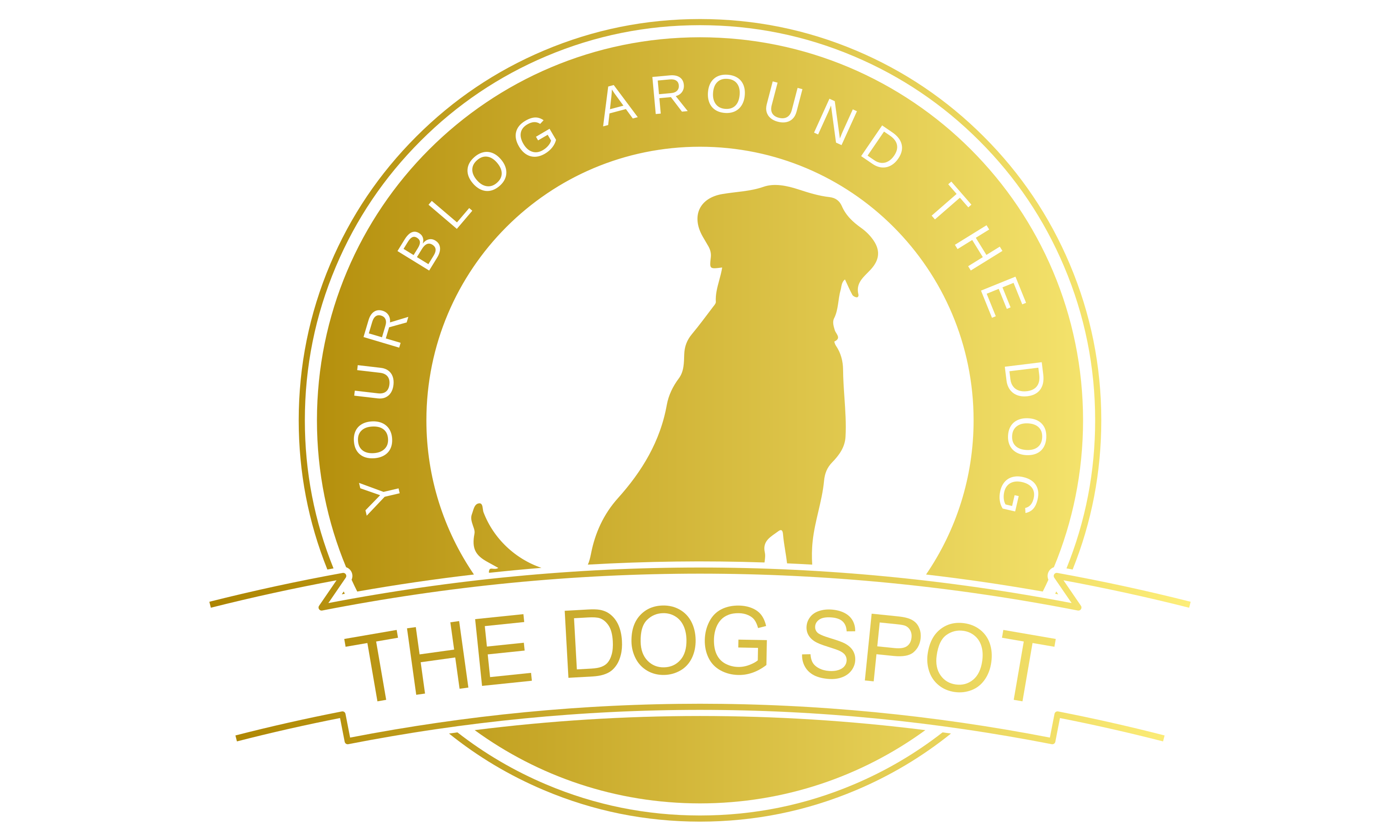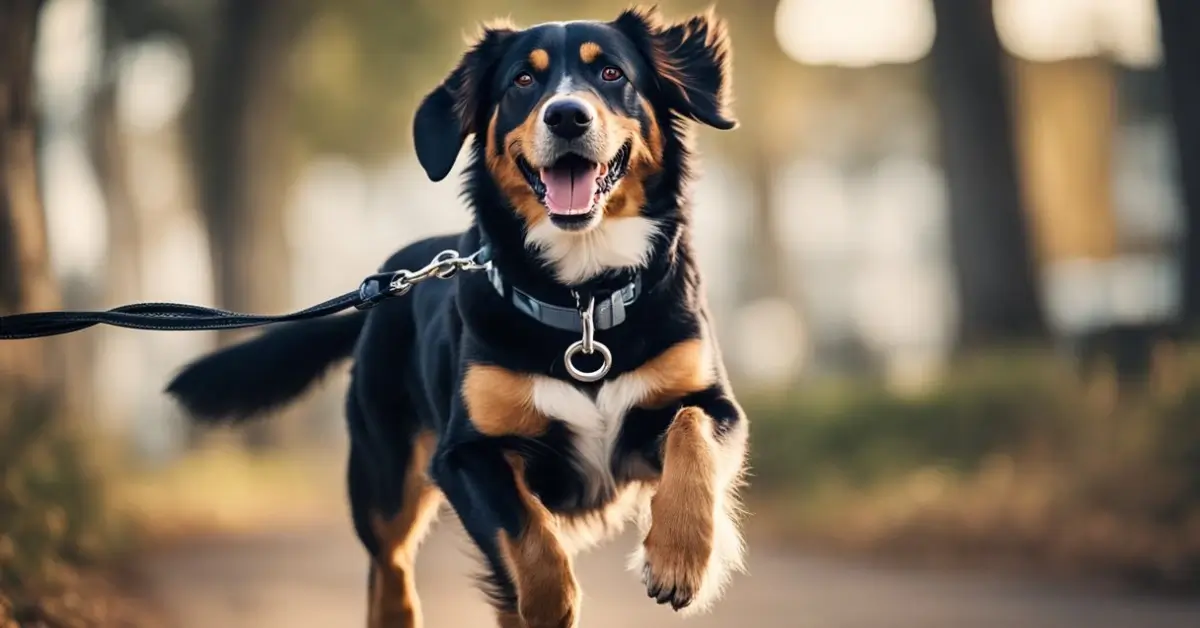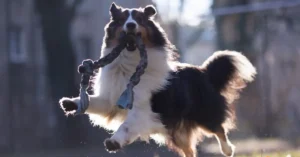Are you tired of struggling with a mischievous pup who always seems to be a step ahead, tugging at the end of their leash during walks? Long leash dog training can be the game-changer you’ve been looking for. It’s the key to teaching your furry friend good leash manners, ensuring enjoyable walks for both of you.
Imagine strolling through the park with your dog, the leash relaxed, and your four-legged buddy obediently at your side. It’s not a distant dream. With the right approach, patience, and a commitment to long leash training, you can turn your walks into a pleasant experience. Whether you have a spirited puppy or a rambunctious adult dog, this training method can transform their behavior, making outdoor adventures more enjoyable and stress-free.
In this guide, we’ll walk you through the ins and outs of long leash dog training. From the basics of getting started to advanced techniques, you’ll discover how to instill discipline, build trust, and create a stronger bond with your canine companion. Say goodbye to leash pulling and hello to peaceful, relaxed walks with your well-trained pup.
Pros:
🐶 Durability
🐶 Easy to clean
🐶 Lightweight
Cons:
❌ Rolling up or proper storage required
❌ Can get tangled
❌ Slightly inconvenient in playing with other dogs
Understanding Long Leash Dog Training
Long leash dog training is a technique used to teach dogs important cues and commands. It involves using a long leash, typically between 15 and 30 feet, to give the dog more freedom while still maintaining control. This type of training is beneficial for dogs that tend to run off or become easily distracted.
The goal of long leash dog training is to teach the dog to respond to commands even when they are not right next to their owner. This is important for safety reasons, as well as for allowing the dog to have more freedom while still being under control.
When starting long leash dog training, it is important to have a plan in place. This may include setting specific goals for what you want your dog to learn, as well as determining the length of the leash you will use. It is also important to choose a safe location for training, such as a fenced-in yard or a quiet park.
It’s also important that you remain patient throughout the process. Dogs can get easily distracted, which is why it makes sense for the commands to be simple and repeated often. In our opinion, positive reinforcement is particularly important. This can be a simple and friendly praise or even a treat. This way, you show your dog that they’re on the right path. After all, who doesn’t like to be rewarded for doing the right thing?
Choosing the Right Equipment for Long Leash Dog Training
As mentioned earlier, we consider long leash dog training an excellent way to teach your dog important cues. However, choosing the right equipment can be challenging. There are many types of leashes, collars, and other tools to choose from. In this section, we will discuss the different types of equipment you need for long leash dog training.

Types of Leashes
We understand that there is a wide variety of leashes to choose from, making the decision a bit challenging. The most popular options include nylon leashes, retractable leashes, and long lines.
In our opinion, nylon leashes are lightweight and sturdy, making them perfect for daily use, such as a short walk to the park.
Retractable leashes are adjustable, allowing your dog to roam a bit further. However, they can be dangerous for both the dog and people if not used correctly.
Long lines are very lightweight and allow your dog to explore the nearby area without you, as the owner, losing control. That’s why we consider long lines ideal for long leash dog training.
Choosing a Collar or a Harness
More important to us than the right leash is the collar or harness. The collar should be sturdy and secure, but by no means too tight. A collar that is too loose can slip off, but a flat collar is a safe choice for most dogs.
However, we believe that a harness is the better alternative. It doesn’t pull the dog’s neck but rather distributes the tension across their body. This provides additional security, preventing the dog from slipping out. Nevertheless, it’s important to ensure the right size.
Other Essential Tools
In addition to a leash and collar, there are other essential tools you will need for long leash dog training. Treats are a great way to reward your dog for good behavior. You may also need a clicker to mark good behavior. A whistle can be used for recall training, and a treat pouch can hold your dog’s treats. We also always have some water for our furry friend during our training sessions.
Materials and Durability
When choosing your equipment, consider the materials and durability. Look for reinforced stitching and waterproof materials. Nylon and biomethane are popular materials for leashes because they are lightweight and easy to clean. Make sure your equipment is sturdy and durable enough to withstand the wear and tear of long leash dog training.
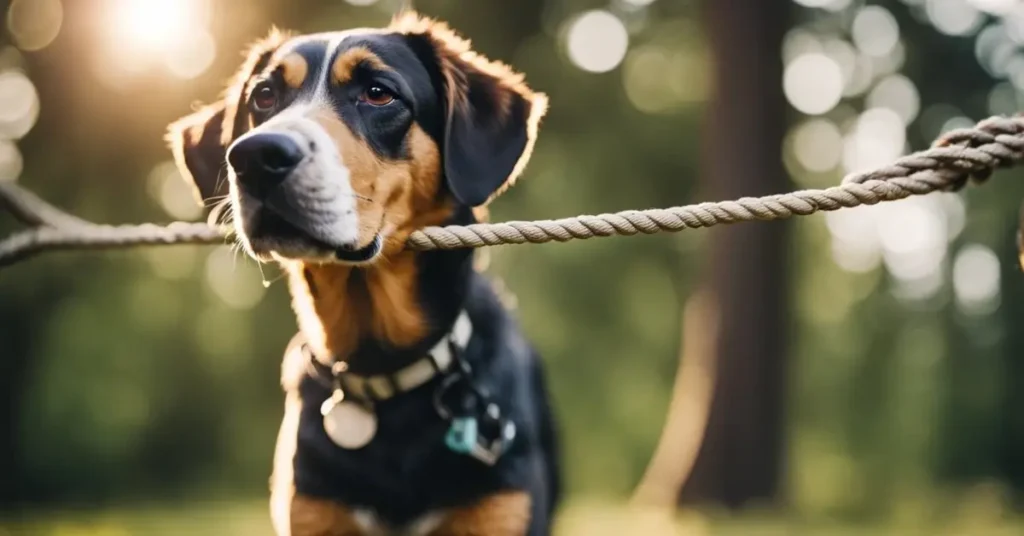
Affordability of Leashes
Finally, consider the affordability of leashes. While it may be tempting to buy the cheapest leash you can find, investing in a sturdy, high-quality leash can save you money in the long run. Cheap leashes may break or wear out quickly, requiring you to buy a new one. Look for a leash that is affordable but also durable and high-quality.
Preparing for Long Leash Dog Training
Now we have the right equipment and are almost ready to go. But just almost. Before you start long leash dog training, it’s important to prepare both the dog and the trainer. This section will cover the necessary steps to take before beginning long leash training.
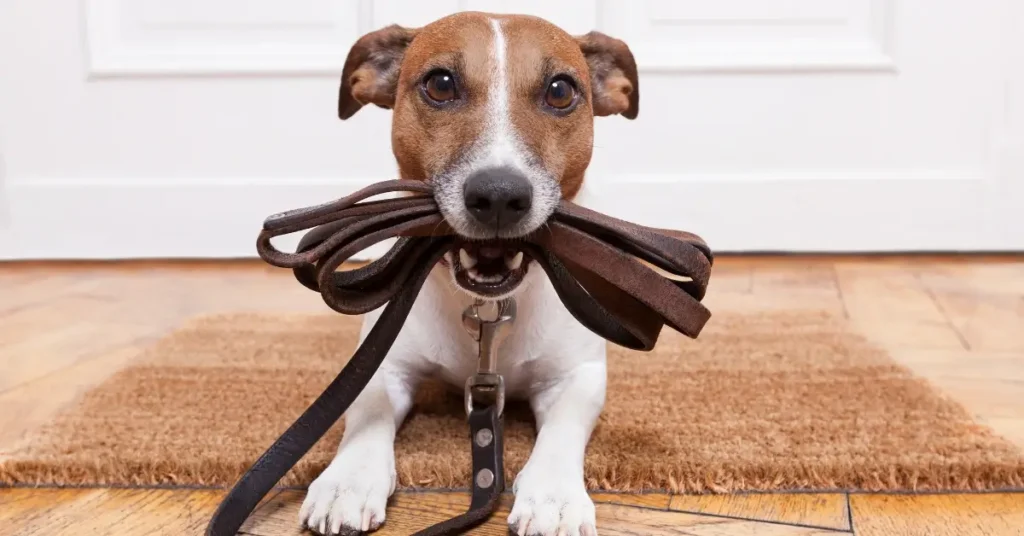
Train Basic Commands
Important to start with Long Leash Dog Training is that your dog has internalized the basic commands like “Sit,” “Stay,” and “Come.” Without mastering these, you should not start with long leash training.
If you’d like us to create a blog post on this topic, please let us know in the comments.
Practice Leash Walking
Just like the basic commands, it’s important that your dog already has good leash-walking skills. The dog should be able to walk calmly on a regular leash before transitioning to the long leash.
Choose the Right Training Location
You surely know how important it is not to distract your dog when they are learning new things. That’s why long leash training should be conducted in a safe and controlled environment. A fenced backyard or a quiet park are good options.
You should make sure that the dog feels comfortable in the surroundings. If they are anxious or nervous, we are confident that the training will not be successful.
If you’d like a post on the mentioned basics, leash walking, or selecting the appropriate training location, please let us know in the comments.
Basic Training Commands
When it comes to long leash dog training, teaching basic training commands is essential. These commands not only help manage a variety of common behavior problems but also provide a sense of structure and order for the dog.
Teaching Distance
In many situations, your dog must stay in a specific place, whether it’s off-leash or in emergencies. Long leash training provides the ideal foundation to teach this important command.
For instance, you might want your dog to relax and stay calm without a leash at the beach or in emergencies where immediate control is needed. Long leash dog training allows you to instruct your dog to respond appropriately in such circumstances.
With the long leash, you can safely move away from your dog without losing control. This training builds trust and reliability, ensuring that your dog remains safe and obedient in various situations. It’s a valuable skill that proves useful in many everyday scenarios and ensures your dog’s well-being and safety
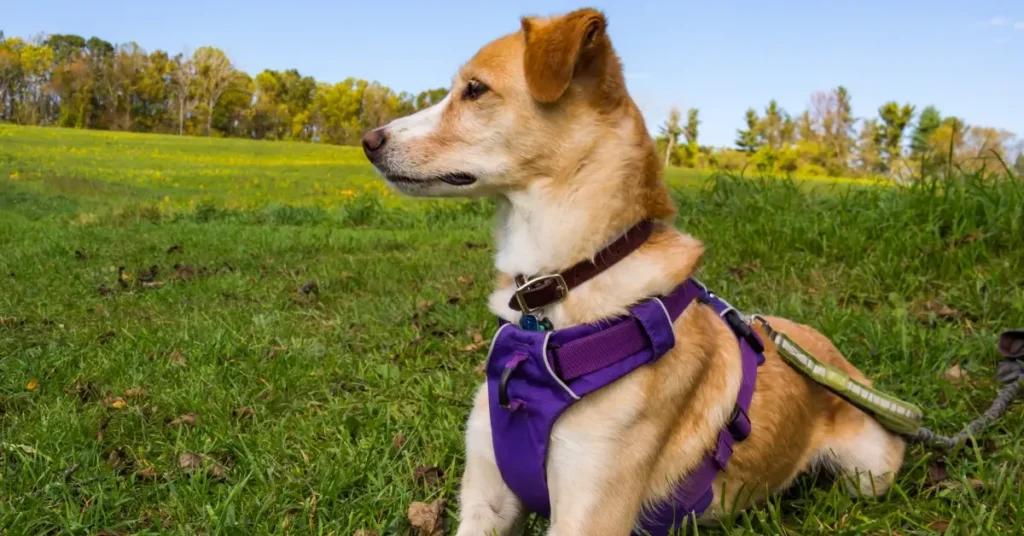
🐶 Step 1: Sit and Stay
Command your dog to “Sit” and “Stay,” using clear hand gestures, such as pointing with your flat hand towards your dog.
🐶 Step 2: Move and Command
Step away from your dog by about one meter and repeat the command “Stay.” Point with your hand towards your dog once again.
🐶 Step 3: Reward
When your dog maintains the position, return to them, and reward them with praise and a treat. Also, try to maintain positive body language.
🐶 Step 4: Increasing the Distance
Repeat Step 2, but gradually increase the distance between you and your dog. Move approximately two or three meters away.
🐶 Step 5: Reward and Repetition
If your dog reliably stays in the “Stay” position even at an increased distance, return to them and reward them again.
🐶 Step 6: Expanding the Distance
Continue to incrementally increase the distance to test your dog’s ability to follow the “Stay” command at a distance.
🐶 Step 7: Practice and Repetition
Regularly repeat these exercises to strengthen your dog’s “Stay” command skills with a long leash. With patience and positive reinforcement, your dog will learn to stay reliably in this position, even at a distance.
Ensure that you gradually progress these exercises and ensure your dog is comfortable and focused.
Recall
Do you want to call your dog back when he’s ventured farther away?
Then the “Recall” command is crucial. With Long Leash Dog Training, you can teach your dog to reliably respond to your call. This vital training enables your dog to stay close to you and return to your side on command in all situations.
Whether you’re at the park, beach, or in open areas, the “Recall” command assures you that your dog will remain safe and obedient, even when he’s ventured a certain distance. It’s a key skill for a stress-free and harmonious relationship with your furry friend.
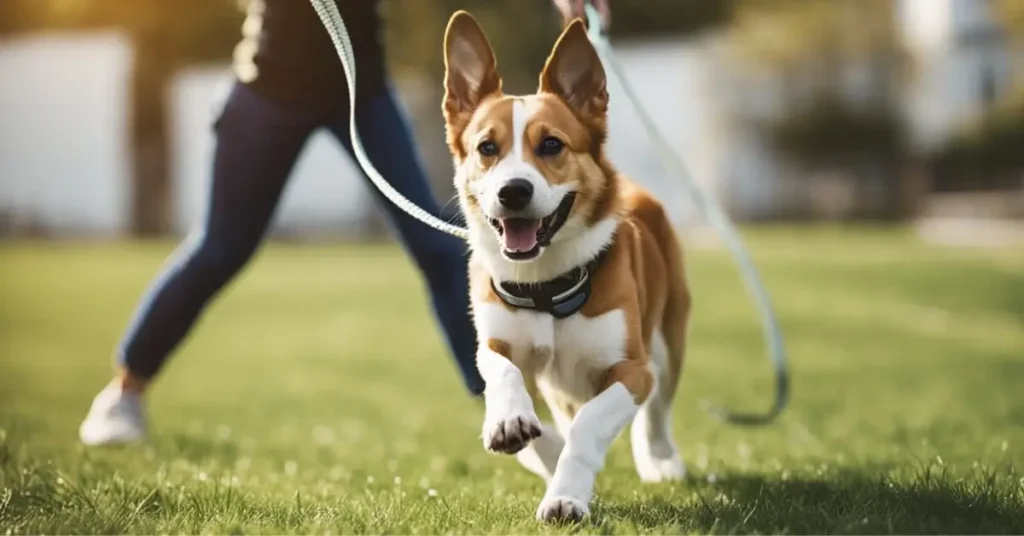
🐶 Step 1: Stay and Distance Your dog should have mastered the “Stay” command. Give your dog the “Stay” command and move away from him.
Alternatively, you can incorporate this exercise into your walks. Let your dog drag the leash behind them and move away from them.
🐶 Step 2: Command and Reward Start by calling your dog’s name in a cheerful tone. As soon as your dog looks at you, say “Come” and show a treat.
🐶 Step 3: Stand Still or Move Backward Now you can vary. Either wait for your dog to build confidence in this exercise, or take a few steps backward as your dog comes to you.
🐶 Step 4: Reward and Repetition Once your dog comes to you, reward them with a treat and plenty of praise.
🐶 Step 5: Increasing the Distance Repeat these steps, gradually increasing the distance between you and your dog.
🐶 Step 6: Practice and Repetition Practice the “Come” command regularly to ensure your dog reliably responds to your call, even from a distance.
🐶 Step 7: Patience and Positive Reinforcement Stay patient and reinforce good behavior with praise and rewards to strengthen your dog’s abilities in the “Come” command.
Remember to always use positive reinforcement when training your dog. Reward them with treats, praise, and affection when they perform the desired behavior. With patience and consistency, your dog will learn these basic training commands and become a well-behaved companion.
Safety Measures and Precautions
When it comes to long leash dog training, safety should always be a top priority. Here are some safety measures and precautions to keep in mind:
Use a Properly Sized Leash
The length of the leash should be appropriate for the size of the dog and the training goals. Ideally, the length should be between 15 to 30 feet, providing enough freedom for your dog to explore while still allowing you to maintain control.
This length allows for proper distance management and recall training. Using a leash that is too short can limit your dog’s movement and lead to frustration, while a leash that is too long can increase the risk of entanglement and injury.
Supervise Your Dog
During long leash training, we’ve repeatedly noticed how important it is not to take your eyes off your dog. This helps to quickly identify potential hazards and intervene if necessary. Your dog will also appreciate your attention, which can alleviate their fears and anxieties during training.
Use Positive Reinforcement
Positive reinforcement is a key component of successful long leash training. This means rewarding your dog for good behavior and ignoring or redirecting bad behavior. Punishment or negative reinforcement can lead to anxiety and fear, making training more difficult and ineffective.
Be Prepared for Emergencies
No matter how careful you are, accidents can happen. It’s important to be prepared for emergencies by carrying a first aid kit, a cell phone, and any necessary medications or supplies. Additionally, it’s a good idea to have a plan in place for what to do in case of an emergency.
Benefits of Long Leash Training
Long leash dog training has many benefits for both the dog and the owner. In this section, we will explore some of the key benefits of long leash training.
Freedom
Long leash training allows dogs to explore their surroundings while still being under control. It gives them the freedom to sniff around, run, and play without the risk of running away or getting into danger.
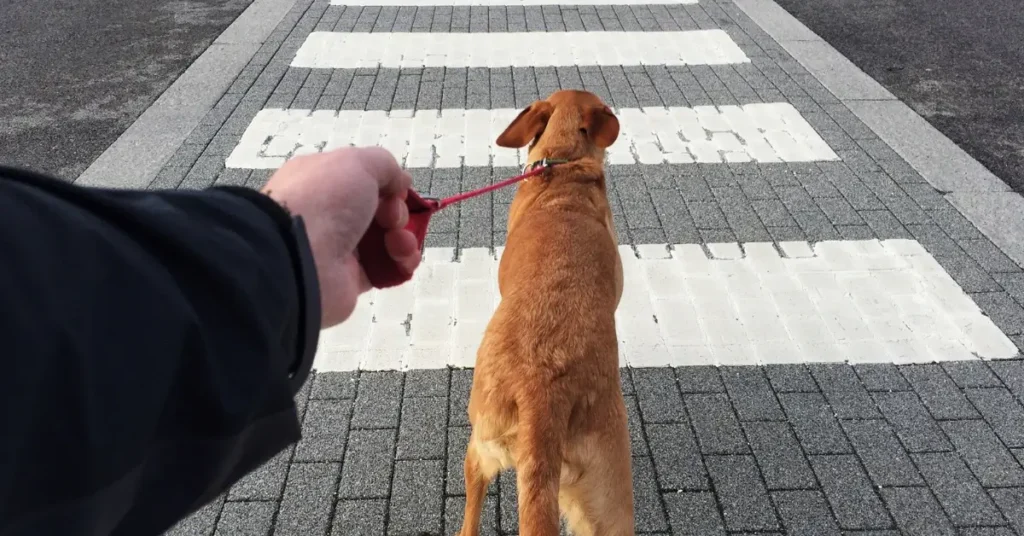
Mental Stimulation
Long leash training provides mental stimulation for dogs. It allows them to explore new environments, smells, and sights, which can help prevent boredom and reduce stress.
Socializing
Long leash training provides opportunities for dogs to socialize with other dogs and people. It allows them to interact with others in a controlled environment, which can help them develop social skills and improve their behavior around others.
Health
Long leash training can improve a dog’s physical health. It provides them with the exercise they need to maintain a healthy weight, build muscle, and improve cardiovascular health. It also helps to prevent obesity, which can lead to a range of health problems.
Are you interested in Medieval Dog Breeds? Be sure to check out our article on this fascinating topic!
Specifics for Different Ages
Long leash dog training can be used for dogs of all ages, but it is important to adjust the training techniques based on the dog’s age and developmental stage. Here are some specifics to keep in mind when training dogs of different ages:
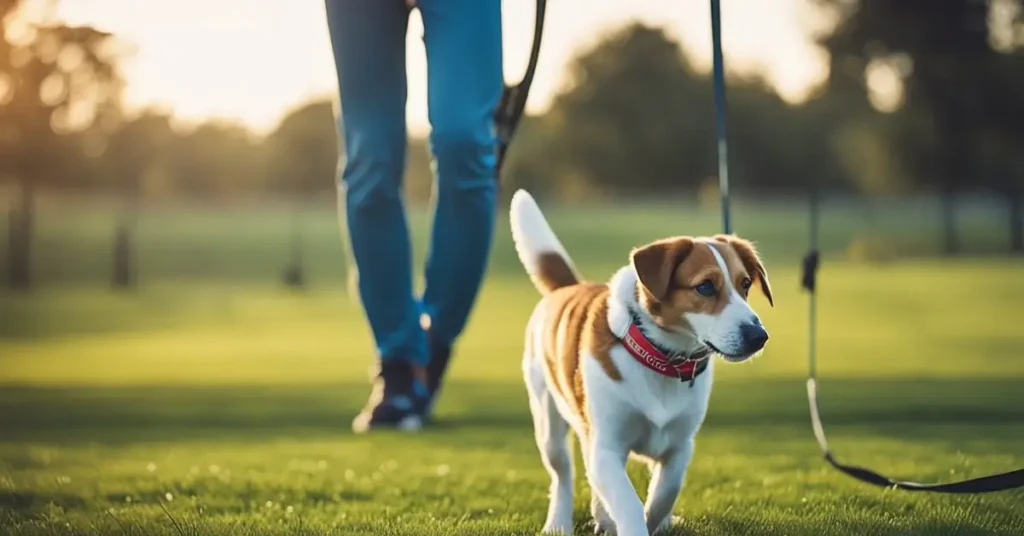
Puppies
Puppies are like sponges, soaking up all the information they can. It is important to start training puppies as early as possible to ensure they develop good habits. Long leash dog training can be used to teach puppies basic commands like “come” and “stay”. However, it is important to keep training sessions short and positive, as puppies have short attention spans. It is also important to use a lightweight, comfortable long leash to avoid putting too much strain on their developing bodies.
Adolescents
Adolescent dogs can be a bit of a handful, as they start to test their boundaries and explore the world around them. Long leash dog training can be used to teach adolescent dogs impulse control and proper behavior around other dogs and people. It is important to use a longer leash with adolescent dogs, as they have more energy and need more space to move around. Training sessions should be structured and consistent, with clear rewards for good behavior.
Adult Dogs
Adult dogs can benefit from long leash dog training to reinforce good behavior and teach new commands. Using a sturdy, durable long leash with adult dogs is important, as they may be stronger and more powerful than younger dogs. Training sessions should be tailored to the dog’s individual needs and abilities, with a focus on positive reinforcement.
Senior Dogs
Senior dogs may have some physical limitations that make long leash dog training more challenging. It is important to use a lightweight, comfortable long leash and to keep training sessions short and gentle. Senior dogs may benefit from training that focuses on mental stimulation rather than physical activity, such as teaching them new tricks or commands. It is also important to consult with a veterinarian before starting any new training regimen with a senior dog.
Frequently Asked Questions
What are some good long leashes for recall training?
When it comes to long leash dog training, choosing the right leash is crucial. Some good options for recall training include the Mendota Products Check Cord, the PetSafe Nylon Training Leash, and the Max and Neo Reflective Nylon Leash. These leashes are durable, lightweight, and long enough to give your dog plenty of freedom while still keeping them under control.
What is the ideal length for a long leash when training a dog?
The ideal length for a long leash when training a dog depends on the size and breed of the dog, as well as the specific training goals. Generally, a leash that is between 15 and 30 feet long is a good choice for most dogs. This length allows your dog to explore and move around while still giving you control during long leash dog training.
Are there any lightweight options for long training leashes?
Yes, there are many lightweight options for long training leashes. Nylon and biothane leashes are both lightweight and durable, making them great choices for long leash dog training.
What are the benefits of using a long leash for dog training?
Using a long leash in dog training has many benefits. It allows your dog to explore and move freely while you maintain control. It also aids in recall training, as your dog will learn to come back to you when called. Additionally, long leash dog training can boost your dog’s confidence and enhance their overall behavior.
We hope to have provided you with an overview of long leash dog training through our post. If you have any more questions, suggestions, or additions, please feel free to let us know by writing a comment below the post.
